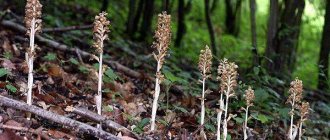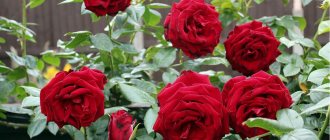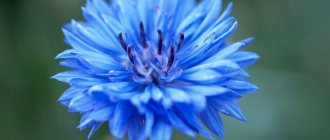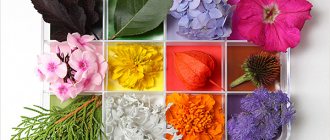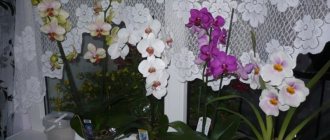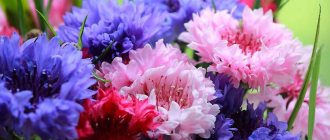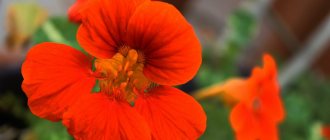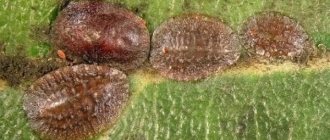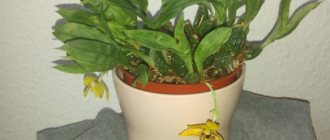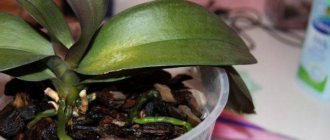The orchid, which has captivated many with its grace, has an equally beautiful history of its appearance. Scientists believe that representatives of this family grew on Earth a hundred million years ago, and, according to legend, the first such flower appeared in the place where the goddess of love Aphrodite lost her slipper. Nowadays, according to psychologists, a blooming orchid can act as a healer for depression.
In the modern world, there are tens of thousands of species of the orchid family. They are successfully grown in various parts of the world, becoming an adornment not only of wild nature, but also an asset to gardens, greenhouses and flower beds. These sophisticated plants require not only careful care, but also proper protection, since many of their species are endangered.
Here is a selection of the most beautiful representatives of the family, designed to conquer the most skilled flower growers.
Phalaenopsis or "Fluttering Butterfly"
This most beautiful type of orchid, shaped like a butterfly in flight, has gained popularity not only because of its exquisite appearance, but also because of its ease of care. Another advantage of the plant is the length of the flowering period, reaching six months. Many of them are easily adapted at home and can be covered with flowers all year round.
Phalaenopsis gains particular popularity during the celebration of March 8th. Many men, captivated by the elegance of this flower, choose it as a gift to close women.
In the wild, the Fluttering Butterfly can be found in countries such as India, Myanmar and Vietnam.
Flowers of mini-orchids of the genus Ascocentrum
Ascocentrum Schltr - Ascocentrum.
A small genus of monopodially growing epiphytic or lithophytic orchids, numbering only 4-5 species. The name of the genus is made up of two Greek words - "askos" - bag and "kentron" - spur and describes the most remarkable feature of the flower - a short spur at the base of the lip.
Medium-sized orchids with short, hard, leathery leaves and thick aerial roots. The inflorescence (an erect or slightly curved multi-flowered dense raceme) bears several dozen wide-open, medium-sized flowers with a small spur.
The sepals and petals are similar, the three-lobed lip is motionlessly connected by its base and lateral lobes to the base of the column, and there is a callus-like outgrowth inside the lip.
Plants need warm or moderately warm growing conditions, strong diffused light, and high relative humidity (70-80%). During the winter holidays, the temperature may drop slightly, but not below 15 °C. During active growth, regular, abundant moisture is required, but during the dormant period, watering should be limited to avoid rotting of the base of the shoot.
Can be kept in pots, hanging baskets, or in potted blocks. During active growth, it requires abundant watering, strong diffused illumination (20,000-35,000 lux) and intensive fertilizing with complete mineral or organic fertilizers.
Ascocentrum ampullaceum - Vein-like Ascocentrum.
Homeland - tropical regions of the Himalayas, Burma and Thailand. Epiphyte, rises to low altitudes up to 300-900 m above sea level. Monopodially growing epiphytic orchid with fleshy, dense leaves 14 cm long, densely covered with purple dots. The roots are thick.
The inflorescences are dense, multi-flowered, short (up to 8 cm long), bearing many compactly arranged, pink-purple flowers with a diameter of 1.8-2.5 cm, sparkling in the sun. The petals and sepals of the flowers of this mini-orchid are almost the same shape, 0. 9 cm. The lip is small, brighter colored, 0.6-0.7 cm long. The spur is short, 0.7 cm long.
The column is short, round in cross-section. Blooms in February-July.
Ascocentrum miniatum - Rust-red Ascocentrum.
The species is quite widespread in South and Southeast Asia, from the Indian Himalayas to Indochina and the Indonesian Islands. Monopodially growing epiphyte, grows on the trunks of large trees. A small orchid with a relatively short, erect, strong stem, sometimes branching closer to the base.
The leaves are green, fleshy, grooved, toothed at the end, 5-28 cm long. The inflorescences of this dwarf orchid are formed in the axils of the lower leaves, they reach 24 cm in length and develop many small orange-red or yellow-orange flowers with a diameter of 1.0- 1.8 cm.
Petals and sepals are similar, elliptic-obovate, obtuse. The lip is small, pointed at the end, 0.4 cm long. The spur is straight, cylindrical, 0.7-0.9 cm long.
The flowering time of this species in nature is spring - early summer. In cultivated conditions, flowering plants can be found almost all year round, but the peak of flowering occurs in April, May and June.
Wanda
This variety is distinguished by its height, which can reach one meter, and fairly large flowers, of which up to 15 can form on one shoot. Their color in the first days of flowering has pale shades, and after a few days it acquires rich tones.
By the way, the palette of vanda petals is incredibly wide: they can be snow-white, pale blue, purple, yellow, orange or red. Species of this orchid can be quite easily crossed, both within their own genus and with their other relatives. Therefore, in nature there is a wide variety of interspecific and intergeneric hybrids.
The plant has powerful roots covered with a layer of porous dead cells, which allows it to receive moisture even from the atmosphere and protect itself from water deficiency and burns.
General information
The beautiful and romantic name “orchid” is translated from Greek as “male (or other large mammals) testicles.” For some reason, the ancient Greeks saw the similarity of the shape of the rhizome with this part of the human body. "Dendrobium" is closely related to the word "dendro", which means "tree" in the Greeks. Everything is clear here, because dendrobium orchids, one might say, live on trees. At the same time, they only cling to strong trunks, making their way along them towards the sun. Flower beauties do not receive any nutrients from their living support. According to this feature, they belong to the group of epiphytes.
Orchids have existed on Earth for about 145 million years and are considered one of the oldest representatives of the flower flora. In an apartment, each specimen lives for about 4 years, although there are cases when, with good care, their lifespan was extended to 5-6 years. Stores usually sell flowering orchids. When buying them, be prepared for the fact that your beauty, after pleasing you for several weeks, will fade forever. This happens if the plant is stuffed with stimulants or fertilizers with a prolonged action. Your task is to cure your flower, for which you need to follow the rules of caring for it.
Tselogina
This floral genus contains about two hundred exquisite species, painted in various colors, among which white and dark purple predominate. The aroma of this orchid is reminiscent of the smell of lilies or lilies of the valley, and the incredible beauty of the celogina has made it one of the most common in home and industrial floriculture.
This representative of orchids is able to delight with its flowering from early spring to late autumn, sometimes capturing the beginning of winter.
Houseplants like orchids
Among house plants there are indoor flowers, which in their structure resemble the tropical beauty orchid.
Flower color and shape
are similar to orchid plants .
Christmas cactus.
The color of the petals is varied :
- White;
- Pink;
- Lilac;
- Yellowish.
With proper care, they bloom annually, and flowering occurs on Catholic Christmas . Hence the popular name of the flower.
Leaf shape
The shape and structure of the leaves reminds the orchid of Hemanthus . You can see this flower in the photo. This is a bulbous plant that does not shed its foliage throughout the year.
Hemanthus.
Translated from Greek, its name sounds like “bloody flower.” Other peoples call it “deer tongue” for the shape of its leaves . The flowers of the plant, in addition to red, are white and pink.
Stem and roots
In orchid plants, the root system is very individual and there is no one identical to it . Some bulbous plants that can survive the dry season resemble the roots of orchid plants in appearance, but they do not have a velamen.
Interesting! Orchids are unique flowers that have no complete substitute. All other flowers only vaguely resemble them.
Cymbidium
This beautiful evergreen plant is rightfully one of the most beautiful varieties of orchids. In appearance, it noticeably benefits from the large green foliage that wraps it. However, unlike many of its relatives, cymbidium is very demanding to care for. To enjoy its flowering, a temperature difference is necessary, and in the cold season the flower prefers to be cool. In the wild, the plant is found even at an altitude of two thousand meters above sea level.
Plants with similar external characteristics
It is very easy to make a mistake in the variety of similar inflorescences. Fortunately, in nature there are no completely identical plants: if one thing is similar, then the other must be different.
Leaves
The orchid has simple shaped leaves. In good condition, they should be juicy and elastic, always green.
Plants with similar leaves:
- Hemanthus is a plant with dense sword-shaped leaves. Every year it forms new leaf blades to replace the old ones. Hemanthus flowers do not at all resemble an orchid: they are gathered at the top into a small umbrella with bright yellow stamens protruding upward.
- Iris leaves are very reminiscent of an orchid, but the iris does not have aerial roots.
- Spotted slipper, growing in sandy soils, has orchid-like broad elliptical leaves.
Long peduncle
The orchid has a peduncle of length suitable for its life. They can also boast of this:
- Geranium is an ornamental plant up to 1 m high with several bright flowers in blue and purple shades. Unlike the orchid, geraniums have palmate leaves with small soft hairs and five-leaf flowers.
- Mallow is a herbaceous plant from the dicotyledonous class, with a peduncle up to 120 cm. The leaves are incised, the inflorescences are in the form of a brush.
- Gladiolus grows up to 1.5 m in length. It has a bulb, but unlike an orchid, it is underground. The leaves are thin, the flowers are intertwined into a spike-shaped inflorescence.
Bulba
The bulb is a thickened bulb of a flowering plant that serves as a kind of pantry: it contains nutrients and water in case of drought or lack of nutrition. The size of the bulb varies depending on the variety: from 20 mm to 15 cm. To designate this formation in orchids, the terms “pseudobulb”, “aerial tuber” or “false bulb” are more commonly used, since it is located above the ground.
Aerial tubers do not require special attention, but at the same time they need to be treated with caution due to their fragility and sensitivity to bright light.
Interesting! Only plants from the orchid family of the sympodial type, that is, with several spare stems, have pseudobulbs.
Large root system
As already mentioned, the orchid root system consists of 3 parts:
- thin and strong root;
- velamen - tissue consisting of dead cells and receiving water from air and dew;
- growing tip.
No other plant has such a root. Some representatives of bulbous plants have an above-ground root system, but do not have velamen.
Interesting! Thanks to such a developed root system, not a single plant is similar to an orchid in all respects.
Large flowers
Orchid flowers are very unusual, consisting of 3 sepals and 2 petals. They are very similar to this inflorescence:
- The bearded iris has a simple flower consisting of 6 petals arranged in 2 tiers, which is why it resembles an orchid. Iris also has similar shades: orange, purple, blue. This plant is distinguished primarily by its root system.
- The lily vaguely resembles an orchid due to its perianth, but unlike orchids, it has spiral-shaped leaves.
- Amaryllis, like the orchid, is famous for its large flowers, but they are collected in an umbrella-like inflorescence rather than growing individually.
Kalanta
This representative of the family can easily be considered a record holder for the number of existing species among orchids - there are about 220 of them in the world. Adapted to the conditions of the forests of its native Asia, the plant has learned to retain water, which allows it to bloom even during periods of drought. By this period, its leaves fall off and the roots begin to die. By the way, in addition to deciduous ones, there are also evergreen roses. The flowers of the plant are collected in clusters, and their color can vary from white to various shades of pink, ending with purple.
Watering requirements
During the growing season, the orchid needs to be watered as the soil in the pot or moss in the block dries out. This is usually done every other day. In addition to watering, you can simply place the flower pot for a short time in a container of water, which should be warm and settled. After this, it is placed on a cloth to remove excess moisture from the pot. In summer, the orchid must be regularly sprayed with warm water from a spray bottle.
During the dormant period, watering the dendrobium orchid is reduced to a minimum, and spraying is stopped. If it is flooded with water, as in summer, moisture will accumulate in its cells, which will cause rotting in them.
At the end of the dormant period (early spring), you can stimulate the awakening of the orchid by starting to water it more often. But before this, the plant must have 3-4 months of rest. Otherwise, waking up early will ensure the appearance of rosettes of leaves rather than buds.
Brassia
Growing in the tropical part of America and successfully adapted to European latitudes, Brassia differs from other orchids in the shape of its flower, which gave it another name - “spider orchid”. Its flowers come in various shades of yellow and have raised brownish flecks. And when in flower, the plant can fill the entire surrounding space with a pleasant aroma.
Yellowing leaves
The gradual death of the lower leaf is considered natural. If several leaves of a plant begin to turn yellow at the same time, this should be taken as an alarming signal.
First of all, inspect the plant for the presence of pests, and if none are found, then consider watering and feeding the orchid: most likely, it does not have enough nutrition.
Lelia
Graceful lelia is rightfully considered one of the most attractive representatives of orchids. This sophisticated and graceful beauty, rich in lilac-pink shades, stands out against the background of other more common species. This genus contains both large and miniature plants, which will allow even the most demanding gardener to find a suitable variety. When choosing a lelia, you must remember that it needs high-quality care and prefers coolness and fresh air.
Vechernitsa (night violet)
The nocturnal violet received the name “night violet” for its similarity with violets and because it smells strongly at night. This is a semi-wild crop that grows in self-gardens or is planted by humans. It is grown in flower beds - it is not a houseplant.
An adult flower has small inflorescences with 4 leaves, a large, well-defined stem, and drooping leaves.
Positive qualities of night violet:
- blooms for a long time - from May to August;
- unpretentious in care, survives drought and short cold snaps well;
- its seeds take root well in open ground and germinate well.
The crop does not require special care: it is enough to water it occasionally, if the drought persists, and weed it. She doesn't need feeding.
The noctule plant has one drawback: it is a two-year crop; it blooms only in the second year.
Eveningweed is grown only in flower beds
Miltoniopsis
Representatives of this genus, named after a Brazilian philanthropist and orchid collector, are found naturally in the hot zones of Latin America. The plant has incredible sophistication and tenderness, harmoniously combined with a magnificent aroma. The flower is highly decorative and serves as a win-win option for landscaping an apartment or office if all the necessary conditions are created for it.
The color of Miltoniopsis corollas can be pink, purple, white or lilac-violet, and its stem is so fragile that it can break as a result of the slightest force. Flowering of representatives of this genus can last up to one and a half months, but when cut, the flower fades instantly.
Habitat
It is always important to know in what natural conditions the ancestors of indoor flowers lived. Scientists have found that every plant has a genetic memory, which plays an important role in the life of the descendants of the population. By creating conditions for your green pets that are close to those in which their relatives once lived, you ensure approximately 80% success in caring for the plant. In nature, dendrobium orchids are found in the tropical forests of many southern countries - in China, Bhutan, India, Myanmar, Laos, Thailand, Nepal, the Himalayas and Vietnam. They are accustomed to warm and humid weather conditions during the growing season and cool weather with occasional rain during dormancy. They need to be provided with the same regime in the apartment.
Dendrobium
Plants of this genus have their own specific characteristics that significantly distinguish them from other members of the family. For example, the structure, shape and color of flowers. In addition, among them there are herbaceous plants, shrubs, vines, epiphytes and lithophytes. If you want to purchase a dendrobium at a flower shop, the buyer will only be able to get a hybrid orchid, and its natural species can be found in nurseries or botanical gardens, where they are used to obtain new varieties.
Miniature cattleya and cochleanthes orchids
More recently, these cattleyas were part of the genus Sophronitis Lindl. They are common in the montane forests of Brazil, and require a cooler growing regime than most members of the Cattleya genus.
Cattleya cernua (Lindl.) Van den Berg - Cattleya oblique.
In culture, the species is also known as Sophronitis setia (Lindl.) Lindl. An epiphyte or lithophyte of small size from the low-mountain rain forests of Brazil (1000-1500 m above sea level). Psedobulbs are oval or cylindrical, unifoliate. Inflorescences are apical, 4-10-flowered.
The flowers are 2.2-2.7 cm in diameter, cinnabar-red, the lip at the base is orange-yellow with purple spots. Blooms in autumn or winter.
Requires moderate or cold growing conditions, strong indirect light and high air humidity (>80%). Daily temperature fluctuations should be 7-9 °C.
Prefers block cultivation.
Cattleya coccinea Lindl. — Cattleya scarlet.
In culture, the species is also known as Sophronitis alai (Sophrontis coccinea (Lindl.) Rchb.f.) An aegsphytic or lithophytic plant from Brazil, grows in lowland or low-mountain rain forests (650-1670 m above sea level) on moss-covered trees or on mossy stones. Pseudobulbs are fusiform, unifoliate, only 2-5 cm long.
Inflorescences are apical, 1-2-flowered. The flowers are 3 cm in diameter, scarlet, the base of the lip is orange-yellow with scarlet longitudinal stripes.
Mass flowering occurs in January, February, March and April.
Cochleanthes Raf. - Cochleanthes.
The genus consists of 40 species from the humid cloud forests of South America.
Sympodially growing epiphytes of medium size with small thickened pseudobulbs, two apical leaves and fan-shaped pointed green vaginal leaves on the rhizomes. Inflorescences are lateral, single-flowered.
Requires a cold growing temperature (summer - 27 ° C, winter - 8 ° C), strong diffused light and high air humidity (80%).
Cochleanthes flabelliformis
A small, delicate orchid from the shady, moist mountain forests of Venezuela, Colombia, Honduras, Nicaragua, Brazil and the islands. Jamaica (250-1200 m above sea level). Pseudobulbs are not pronounced; the leaves on each shoot form a kind of fan.
Inflorescences are 10 cm long, lateral, erect, single-flowered. The flowers are fragrant, 7.5 cm in diameter, white with a wide striped purple-violet lip. Blooms in March-June.
Plant of warm or moderate growing conditions. Grows well in conditions of constantly high air humidity, diffused light and with mandatory shading from direct sunlight.
Cattleya
Orchids of this genus are among the most commonly found in culture and the most fascinating among many others. However, both beginners and experienced gardeners can complain about their pickiness and prolonged lack of flowering. When favorable conditions are created, the plant will delight its owner with excellent large flowers, which can be colored dark purple (almost black) or even snow-white. In addition, cattleyas are able to fill the entire surrounding space with a unique magical aroma, and the smell of some of them is reminiscent of lily of the valley or lily. In breeding, the flower formed the basis for a large number of hybrids, and today most countries have taken measures to protect this plant.
What types of ludisia are there?
All varieties of this plant have approximately the same flowers. Lydisia orchid can vary in leaf color and size, as well as its size. Today there are the following types:
- Dawsoniana - the leaves have a deep green color, which can be called black, the veins on the leaf have a red tint
- Rubrovenia - leaves have a beautiful bronze color with beautiful copper stripes
- Ordiana - classic appearance - dark green leaves with silver stripes
- Trilineata - large leaves in copper shades
- Grandis - large leaves in a classic color
- Condorensis - has a tall stem on which flowers grow
- Otletae - narrow leaves in red shades
Oncidium
Compared to many other orchids, oncidium does not have such a wide variety of colors. Most often, the plant is variegated yellow with brown or red spots. And because of the peculiar shape of the flower, reminiscent of the figure of a girl in a fluffy skirt, oncidium is popularly nicknamed the “dancing doll.” Delicate representatives of the genus in the wild can grow at an altitude of up to four thousand meters above sea level, and at home they easily take root if a suitable temperature regime is provided.
Iris
Iris combines a large number of varieties of different shapes and colors. The flowers are similar to an orchid, only tightly curled and with fringe at the edges. Irises are often chosen for growing in the garden, but they can also be grown indoors. One of these subspecies is Neomarica.
To achieve spectacular flowering in March, suitable conditions are created for it:
- In summer, keep it on the balcony, in a bright place, and be sure to ventilate it.
- In winter, set the temperature at 8°C-10°C, place the flower in a dark place for 2 weeks, do not water or fertilize.
Irises look like an orchid, but are tightly curled and have fringe at the edges.
Neomarica is then transplanted into new soil. She prefers loose and acidic soil, saturated with charcoal.
The variety reproduces by peduncles, which often degenerate into babies.
The long peduncle descends to the soil and takes root on its own. For this reason, Neomarica was popularly nicknamed the “walking iris.” Low-growing bearded irises are grown in the same way.
